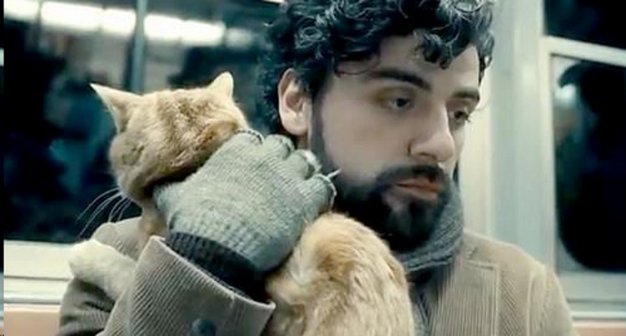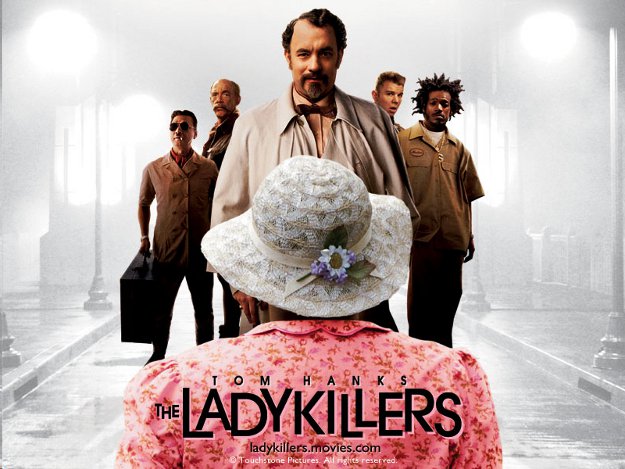‘Inside Llewyn Davis’: The Coen Brothers’ New Film Strikes a Chord

The latest film from filmmaking brothers Joel and Ethan Coen, Inside Llewyn Davis deals with the 1960s folk scene in Greenwich Village with that classic Coen Brothers style. Loosely based on the life of the grizzly voiced Dave Van Ronk – the inspiration for the character of Llewyn Davis, who also has characteristics of a young Dylan, the film explores the misadventures of a struggling young folksinger with dark humor and wit. In the film, the title character, played by Oscar Isaac, jumps from one friend’s couch to another, gets physically assaulted for heckling, loses his friends’ house cat and grapples with questions about the future of his musical career. At times Davis comes across as a likeable and witty hipster and at other times as an arrogant schmuck. He is a complex character that Oscar Isaac convincingly brings to life, perhaps more lifelike than any other character in a Coen Brothers film.
Llewyn Davis is the Coen Brothers’ 16th full-length film, and their first in three years, since 2010’s True Grit – the latter a work that earned a whopping 10 Academy Award nominations, including one for Best Picture, but won none. Though they directed two segments and contributed as writers to other projects in between, Joel and Ethan Coen’s body of work as directors started with 1984’s Blood Simple and has included 14 other works between that and Llewyn Davis, among them such works as: Raising Arizona, Barton Fink, Fargo, The Big Lebowski, Burn After Reading, No Country for Old Men and A Serious Man. Often they have repeatedly teamed up with many of the same actors, including George Clooney, John Turturro, John Goodman, Richard Jenkins, Frances McDormand (Joel’s wife) and Steve Buscemi.
Although the brothers have alternated lead billing credits for screenwriting, and have shared credit for editing under the nom de plume “Roderick Jaynes,” typically the director credit went to Joel and the producer credit to Ethan, despite having shared direction and production duties. Beginning with The Ladykillers in 2004, however (an enjoyable film, even if inferior to the 1955 version starring Alec Guinness), the Brothers Coen began sharing directing credits as an “established duo.”
While some of their earlier movies met with critical acclaim, it was arguably 1991’s Barton Fink that really established their reputation as serious and respectable directors. That film, which won an unprecedented three awards at Cannes, including the Palme d’Or, starred two actors who would go on to become frequent Coen collaborators: John Turturro and John Goodman. The latter of the two, a likeable murderer in Barton Fink, plays Roland Turner, a sharp-tongued, handicapped jazz musician and junkie in Llewyn Davis.
Barton Fink also established a surrealist style that could be described as “Coenesque,” though not too much emphasis should be attributed to this. And not only did that film star actors who would work with the sibling filmmakers many times over the years, but it also had many features that would come to define the Coen Brothers’ style: men that struggled to chase down some elusive dream (here, as in Llewyn Davis, it is career success; in others it is money, as in Fargo, The Big Lebowski, Burn After Reading or No Country for Old Men); allusions to real-life figures (Barton Fink is widely believed to have represented Clifford Odets and W.P. Mayhew, in that film, is clearly a depiction of William Faulkner; in O Brother, Where Art Thou? Tommy Johnson, who sells his soul to the devil at the crossroads, is an obvious portrayal of blues great Robert Johnson; and in Llewyn Davis, the character representations can be easily pinpointed to include such notable figures of the 1960s folk revival as Dave Van Ronk, Bob Dylan, Ramblin’ Jack Elliott and Albert Grossman); violence (even one brutal ass-kicking in a film about the peace-loving early-1960s folk scene); and open endings, the kind that critics often adore and mainstream audiences often detest (case in point, there were several reports of audiences booing at the end of the critically-acclaimed No Country for Old Men).

But the Coen Brothers, like many modernists before them, seem less concerned with mass audience reactions than with art for art’s sake. As filmmakers, they still are standing in the shadows of giants (like Hitchcock or Peckinpah, both of whose influence was obvious in the critically acclaimed No Country), but they succeed in making films that make bold impressions, leaving audiences and critics alike thinking long after the final credits roll up the screen – impactful directors in their own right.
We also find in Llewyn Davis other themes prominent in previous Coen Brothers’ endeavors. First, working-class struggles: Davis’ experiences – like those of the characters in many of the Coens’ films – are rooted in the working class. Davis is by no means a privileged character, not unlike Van Ronk, on whom he was modeled, and not unlike the gym staff in Burn After Reading or like Lebowski and his bowling buddies. Second, allusions to literature and Greek mythology: as with O Brother, Where Art Thou?, we have in Llewyn Davis a reference to Homer’s Odyssey, a cat named Ulysses, who, like Davis, makes his homecoming after a long, strange journey. Third, and related to the last point: philosophical questions. In this film we can find the Nietzschean notion of eternal recurrence. Earlier Coen Brothers’ films, like A Serious Man – a brave follow-up to No Country for Old Men, based in part on their own Jewish upbringing in Minnesota – and The Big Lebowski are both bottomless pools for philosophical analysis. And finally, their love of music, and especially music that is representative of the American experience. Prior to Llewyn Davis, this love figured nowhere so prominently as in O Brother, but it could also be found in works like The Ladykillers, about a bunch of criminals posing as classical musicians, featuring such blues classics as Blind Willie Johnson’s “Let Your Light Shine on Me,” and even in 2003’s Intolerable Cruelty (a piece with two frequent collaborators – Richard Jenkins and George Clooney) that ends with Big Bill Broonzy’s mesmerizing fingerpicking rendition of “The Glory of Love.”
More indebted to a stark realism than some of their previous films, Inside Llewyn Davis is the Coens’ first real music film since 2000’s O Brother, Where Art Thou? But despite Oscar Isaac’s impressive vocals, the music in Llewyn Davis, which like O Brother is produced by T Bone Burnett, is a bit stale – Isaac’s covers of Van Ronk songs lack the grittiness that Van Ronk gave to them, with his famous growl and asthmatic wheeze. Isaac’s versions are pure, but lack style, especially if one is familiar with Van Ronk’s recordings.

Yet it is the music in this piece that really makes the film in a sense (after all it is about what Dave Van Ronk called the “Great Folk Scare” and it tells the story of a “first-rate second-rate” musical artist like Van Ronk trying to make it), but it is secondary to the acting performances and the fun scenes taken straight from Van Ronk’s memoir, The Mayor of MacDougal Street (written with Elijah Wald). Scenes of this nature include the one where Mel Novikoff (the Coens’ version of Folkways Records’ Moe Asch) calls Davis’ bluff and offers him his own coat rather than giving him money when the title character (hinting for cash) says that he doesn’t even own a winter jacket.
Other memorable scenes lifted directly from Van Ronk include: the scene where he loses his seaman’s papers; his experiences hitchhiking; and his meeting with Bud Grossman (the Coens’ obvious depiction of Albert Grossman, played superbly by F. Murray Abraham), who offers Davis a part as the third member of a folksinging trio (in Van Ronk’s book, he explains that this was the role of “Paul,” in Peter, Paul and Mary). And, of course, the film’s title is taken from the 1963 album, Inside Dave Van Ronk, which featured a cat standing in the doorway behind him – likely the inspiration for Ulysses in the flick.
Inside Llewyn Davis is not the Coen Brothers’ finest film, nor is it the greatest film about this period in American music. And it certainly is not best movie of this year. Yet, despite all of this, it is a daring new step (with a starker realism than elsewhere in their film catalogue) from filmmaking siblings who have no fear of exploring uncharted territory in their work. Llewyn Davis is still a likely nominee in the awards races this year, and although the soundtrack is weak (the best tracks are the actual recordings by Dylan and Van Ronk), it is likely to take away some awards in this category, or at least receive its fair share of nominations, for it has been gifted with T Bone Burnett’s Midas touch.
If the Coen Brothers’ latest film has taught audiences anything, it is that we should continue to expect Coenesque brushstrokes in each of their works, but that we shouldn’t base our expectations too much on what they have previously done. The progression of films from The Ladykillers to True Grit has taught us that much (with films like No Country, Burn After Reading and A Serious Man in between). Inside Llewyn Davis employs familiar themes that we encounter in the Coen catalogue, but in it the Coens also surprise us again. It is precisely when you think you have them pinned down that they defy critics’ expectations.

Llewyn Davis may not be their greatest work – and no film stands a chance in the Best Picture race this year against 12 Years a Slave – but it is fresh, acerbically funny and a fun ride back to a time when the scene of American music was changing forever – presaged in the film with Dylan’s performance of “Farewell” – a time foreshadowing what Van Ronk refers to as “the new song revolution,” during which the folksong (that ditty that Davis quips, “was never new, and it never gets old”) would soon be eclipsed by something new if not progressively different, launching some folksingers into superstardom, while leaving others in the dust.
As Dylan said in 1964, “I once thought the biggest I could ever hope to get was like Van Ronk. But it’s bigger than that, now, ain’t it? Yeah, man, it’s bigger than that. Scary as all sh*t.” This change can be imagined by audience members familiar with the history of this period by the very end of the film, but the importance of Van Ronk on this scene is not captured so well by Llewyn Davis. But, of course, this is not intended as a biography of Van Ronk. He was only the inspiration for a character who is infinitely his inferior, with touches of young Bobby Zimmerman added in. It is a film about a time period and of a folksinger chasing after a dream, even if he isn’t quite sure yet what that means. And this is a story that the Coens communicate well, perhaps because it is the same struggle faced by so many of their lead characters, and perhaps because they – like many of us – have faced similar existential problems. Despite all of his doubts and the uncertainties that abound, Llewyn Davis plods forward, even if going forward only takes him back down the same roads he’s been down before, playing the same clubs that he’s played before, facing the same obstacles – more or less – standing in his way.
Author Bio:
Benjamin Wright is a contributing writer at Highbrow Magazine.































































































































































































































































































































